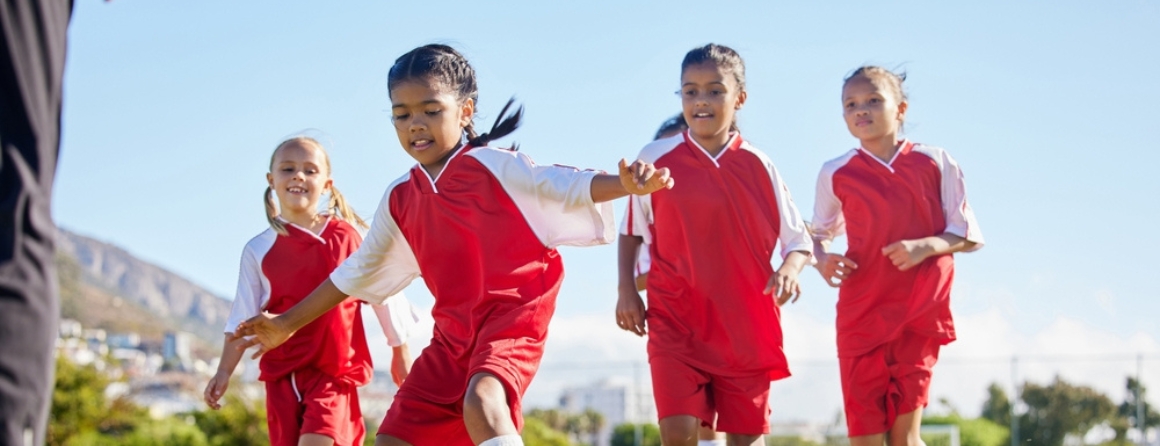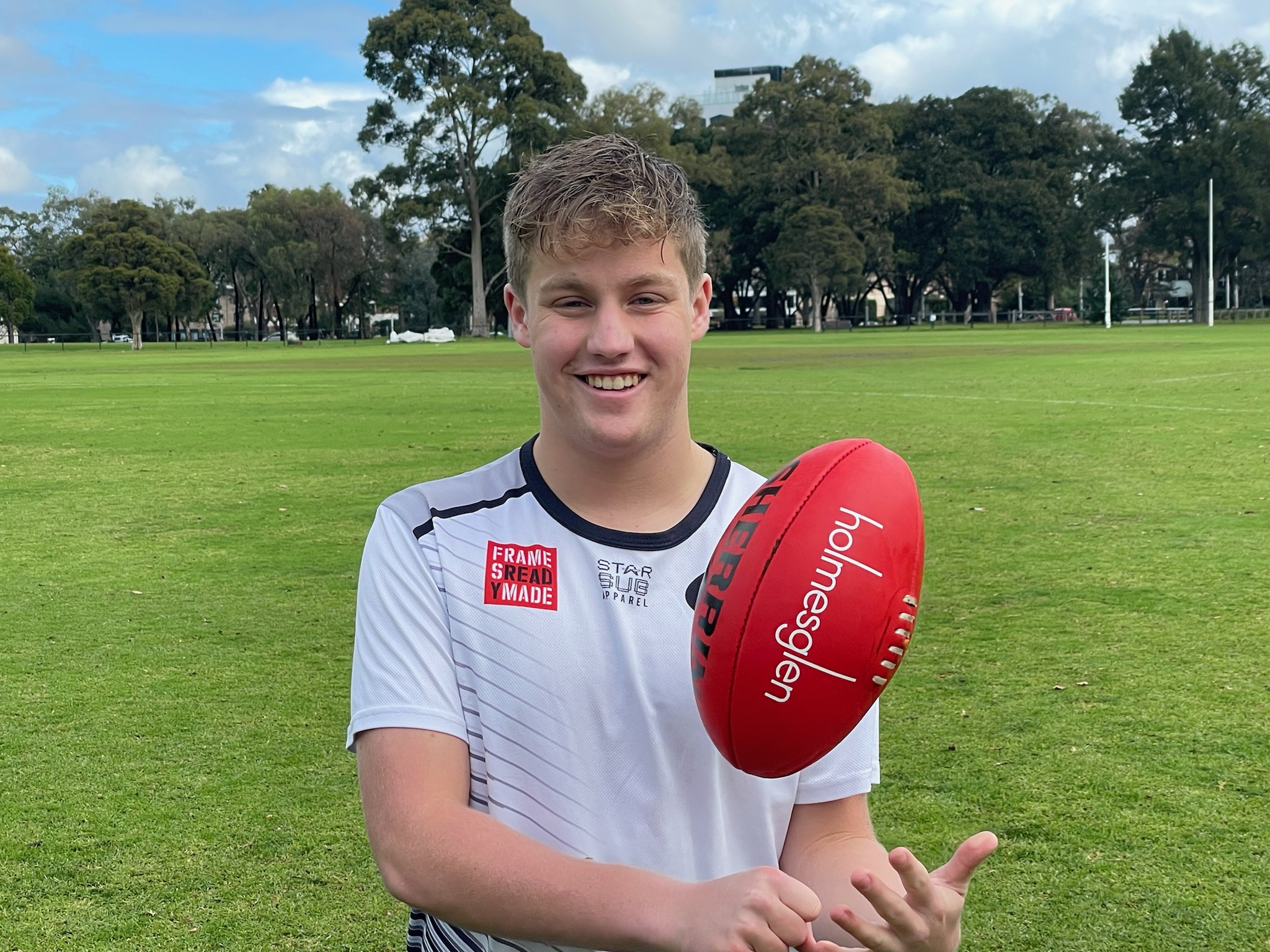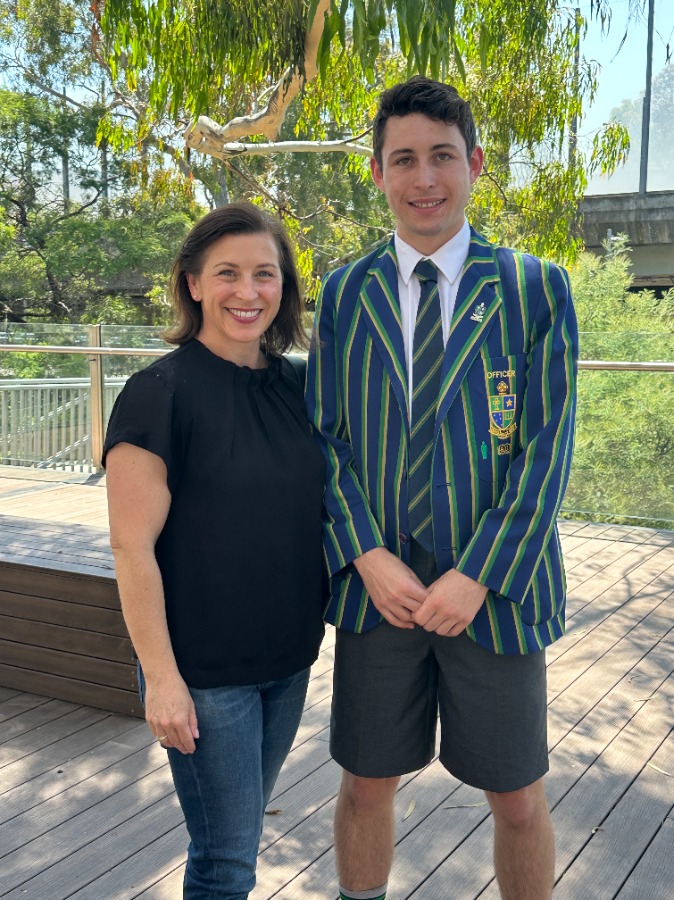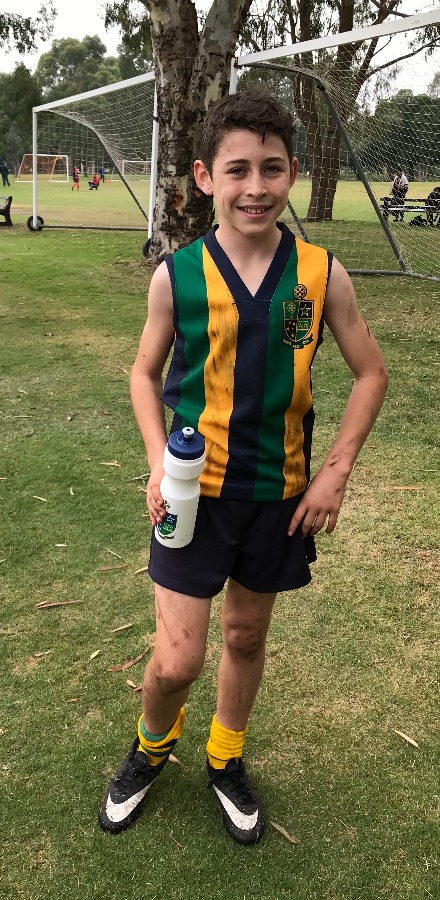New diagnostic tools and updated best practice to treat childhood concussion

New diagnostic tools and updated world’s best practice on how to prevent and treat concussion have been laid out in a ‘game changing’ set of studies.
The vast body of international research, with major contributions from Murdoch Children’s Research Institute researchers and published in the British Journal of Sports Medicine, has taken a deep dive into all aspects of concussion management across 23 papers. The findings were the result of the recently held International Consensus Conference on Concussion in Sport, which sought to establish and guide a coordinated agenda in reducing concussion risk.
Murdoch Children’s Professor Gavin Davis, who provided key insights on childhood concussion in particular, said the findings would change how concussion was viewed across sporting codes, recreational sport and within medical clinics and emergency departments.
“Concussion is among the most commonly occurring injuries in sport and results in a variety of symptoms and functional difficulties that can impact school, work, sport and recreation,” he said. Fortunately, most concussion symptoms will resolve within the initial weeks following injury. However, up to 30 per cent will report persisting symptoms beyond 30 days.
“Our wide-ranging research will be game-changing with improved early concussion assessment criteria and diagnostic and management tools, improved exercise and rehabilitation methods and upgraded return-to school and return-to-sport protocols. Advances in biomarkers and emerging technologies will also guide future research and injury prevention.”
Key findings across the studies included:
- The creation of five new diagnostic and management tools covering the acute (first 72 hours post injury) and subacute period. The tools - CRT6, SCAT6, Child SCAT6, SCOAT6 and Child SCOAT6- each have specific strengths depending on when treatment was sought after the head injury, age of the concussed child and who was making the diagnosis (a medical professional or bystander)
- An updated definition of sport-related concussion to now emphasise the cause of the concussion, the physiological impacts and the evolution of symptoms/signs
- New ‘return to learn’ and ‘return to sport’ strategies spanning rest, exercise and rehabilitation. Continuing to play after sport-related concussion was associated with a longer recovery. Athletes took longer to become symptom free than previously reported. The majority of athletes ‘return to learn’ by 10 days
- Strict rest until symptom resolution was not effective for sport-related concussion. Light intensity physical activity during the 48 hours after concussion helped with recovery. Reducing time spent viewing screens during the first 48 hours post-injury appeared to aid recovery
- Mouthguards were associated with a 26 per cent decrease in sport-related concussion in collision sports. Headgear was linked to lower rates of concussion in soccer. No unintended consequences were reported in reducing body checking in contact spots. Neuromuscular warm-up programs in rugby saw a drop in the concussion rate of up to 60 per cent
- There was no evidence to support exact timing on when an athlete should retire or discontinue sport. But decisions should involve clinicians with expertise in traumatic brain injury and sport and consider the psychosocial, injury-specific and sport-specific factors as well as any persisting symptoms
- Advanced neuroimaging, fluid-based biomarkers, genetic testing and emerging technologies were sensitive to the acute effects of sport related concussion and tracking neurobiological recovery. Critical progress has been made towards validating advanced technologies for concussion management but clinical relevance is yet to be confirmed
One in five children will experience a concussion before the age 10, mainly due to falls or playing sport.
Oliver Radford, 18, has had six concussions with the most recent and impactful two years ago while playing football.

Oliver, 18, suffered a life changing concussion two years ago during a football match.
“I was at footy training and tackled someone,” he said. We were both still upright but then the player I tackled lost his footing and when trying to rebalance himself he threw his elbow up and it collided with my jaw.
“I wasn’t knocked out but was dazed and walked off the field to lie down. It wasn’t long after that I began vomiting and went to hospital.”
Oliver said in the weeks following the concussion he was extremely sensitive to light and needed to be kept in a dark environment and experienced nausea and headaches for months.
“Due to the impact, I missed weeks of school and then only went back with limited hours,” he said. I still have issues with concentration and can struggle to focus.”
Oliver said due to the lingering impacts of the concussion he had given up playing football and instead became an umpire.
“The physio had cleared me to play but I decided not to risk another concussion,” he said. I would love to keep playing but I don’t feel it’s worth putting my health at long term risk.”
Oliver said having a more comprehensive concussion roadmap would make a huge difference for players and sporting clubs to better manage recovery.
Bernadette Healey’s son Max, 18, suffered a concussion last year while also playing football at school.
“Max had a head-on collision with another player and due to the force was knocked to the ground,” she said. He got back to his feet but he knew something wasn’t right. He came off the ground and didn’t return to the game. He felt fine the next morning so umpired a local footy match but when he arrived home things started to unravel.”
Bernadette said Max had experienced head knocks before while playing footy, a game he first staring playing as a four-year-old, but always recovered quickly. But she said this time was different and over the following weeks his concussion symptoms worsened.

Bernadette with her son Max, 18, who suffered a concussion while playing football at school.
“We followed the return to school and sport protocols but he wasn’t improving,” she said. He was experiencing dizziness, headaches, insomnia and was having difficulty finding the right words to express himself. He is a very academic and loved school but had to undertake part-time study.”
The family sought the support of a medical team consisting of psychologists, physiotherapists, neurologists and pain specialists as well as enrolling him in a Murdoch Children’s study, which was trialling whether a targeted, individualised approach to treatment improved outcomes and recovery time compared to usual concussion care. Oliver, who also took part in the study, said the intervention helped to fast track his recovery.
“Seeing your child so unwell is extremely stressful, especially when it’s a brain injury,” Bernadette said. You’re not sure how much to push them back into sport and other activities and when to hold back for recovery. It’s an invisible injury and you can’t see the extent of the damage. Having experts around to give us reassurances has been comforting and Max’s team are positive that he will return to his old self.”

Max during his football playing days.
Bernadette said the new concussion tools and protocols would provide families and medical professionals with greater confidence in their decision making.
“The more resources that are available the more likely their child will have a much smoother recovery,” she said.
“There is still a small group within community sport who still push the boundaries when it comes to head knocks and sending players back onto the field. This new research will help empower families and medical staff to wipe out this practice.”
Murdoch Children’s Professor Vicki Anderson, who contributed to the research, said typical concussion symptoms were not easily recognised leading to many children not receiving medical help as early as they could.
As a result, about 30 per cent endure a slow recovery, with symptoms such as headaches, difficulty remembering and sensitivity to light, lasting for months. One in three will go onto develop a mental health condition, which can persist for several years, she said.
“Unlike adults the developing brain responds differently to concussion and the prevention of long-term effects require child specific diagnosis, acute management and recovery protocols,” Professor Anderson said.
“Acute management in Australia is varied and not always aligned with best evidence. Many children are not treated according to best practice and most families are not provided with guidance regarding their child’s recovery.
“Community messaging around concussion and its consequences is often sensationalised and not underpinned by evidence, resulting in increased child and parent anxiety regarding participating in sport and return to activity after injury.”
Professor Anderson said the new research provided evidence-based concussion management protocols, from the time of concussion through to full recovery, which were key to accelerating recovery.
The new diagnostic tools will work alongside the HeadCheck App. The app, designed by leading child concussion experts at Murdoch Children’s in collaboration with The Royal Children’s Hospital and the Australian Football League, is a concussion management tool to help recognise concussion early and manage recovery.
The complete journal issue can be found at bjsm.bmj.com/content/57/11 and bjsm.bmj.com/content/57/12
*The content of this communication is the sole responsibility of the Murdoch Children’s and does not reflect the views of the NHMRC.
Available for interview
Professor Gavin Davis, Murdoch Children’s researcher and neurosurgeon
Professor Vicki Anderson, Murdoch Children’s Theme Director, Clinical Sciences
Oliver Radford, 18, who has had six concussions from sport and falls
Bernadette Healey whose son Max, 18, suffered a concussion while playing footy
Media contact for Murdoch Children's
Phone: +61 457 365 848
Email:
show email address
About Murdoch Children’s Research Institute
Murdoch Children's Research Institute is the largest child health research institute in Australia committed to making discoveries and developing treatments to improve child and adolescent health in Australia and around the world. They are pioneering new treatments, trialling better vaccines and improving ways of diagnosing and helping sick babies, children and adolescents. It is one of the only research institutes in Australia to offer genetic testing to find answers for families of children with previously undiagnosed conditions.



